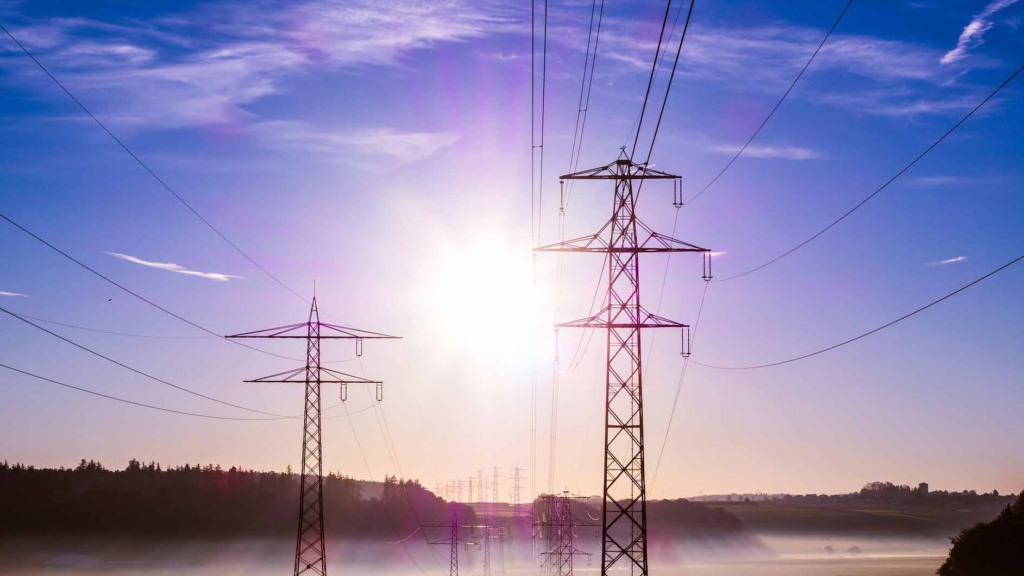
With application of Smart Grid concept to the power distribution system, there is a need to optimize energy efficiency, deploy the latest technology for efficient system operation and to conduct real-time online monitoring. Currently, real-time online monitoring is carried out on few networks/cables around the world. Distribution lines are continuously being extended or newly installed to address the ever-increasing demand for power by applying comprehensive base ampacity to the system operation. With the popularity of Smart Grid, it is getting imperative to establish the electrical power system embedded within communication networks with a feature for intelligent monitoring and assets control. Previously the power distribution systems used electrical power networks and communication networks operating separately. However, with advent of OPGW, which is a power cable with integrated optical fibers, electrical power networks and communication networks can be established simultaneously.
With widespread use of OPGW and the availability of Optical fiber in power lines, technologies like Distributed temperature sensing (DTS) and Distributed Acoustic technology can be deployed to measure the temperatures and vibration, hence making the power line smarter and more reliable.
Once DTS technology is applied to distribution power cables, which currently account for most of the faults in distribution systems, the distribution power cables can be monitored in real time. Moreover, the temperature monitoring allows the operator to adjust ampacities of the power lines. If the dynamic ampacities of power networks can be monitored and rectified in real time, the operating ampacity of the distribution line can be increased greatly, while maintaining an acceptable safety margin. An intelligent cable monitoring system utilizing DTS and DAS can not only monitor but make the networks more power efficient saving operating cost and improving safety.
The remote monitoring of various assets and systems are becoming increasingly prevalent. An optical fiber can be used to perform such monitoring. The optical fiber can be used as data transmission and a telemetry along the length of the cable.
There are different types of such devices:
a system for distributed temperature monitoring. It is based on Raman scattering principle and which is sensitive to the temperature variation. For DTS technology, the interrogation unit receives the scattering light along the length of optical fiber, which is analysis for any change in temperature. The optical fiber act itself as multi-point sensors, reflecting back a small amount light which has the information for temperature variation. The response and accuracy of detection measurements to the location accuracy (spatial resolution) are the sort-after parameters. The higher accuracy of detection measurement requires more time, while with several degrees of inaccuracy the response takes less time. In general, it is possible to calculate temperature to a precision of tenths of a degree along the length. Multi-mode fiber based DTS are quite popular also SM fiber based DTS are making inroads as well.

a system for distributed monitoring of acoustic signals. It is based on Rayleigh scattering and detect changes in vibroacoustic vibrations of the surrounding medium. The optical fiber acts as a long-distance virtual microphone. The interrogation unit helps the user to understand what is happening around the fiber. There are different interrogation technology are available, depending on the required spatial resolution and system length. DAS system operates with a standard single-mode fiber.

a system for distributed monitoring of strains occurring in the fiber. It is based on Brillouin scattering and detects back scattered light due to the fiber elongation. The interrogation calculates the fiber elongation in each point along the fiber length. The DSS system uses a standard single-mode fiber, which allows determining the fiber elongation with an accuracy to a few hundredths of a percent.

The Fiber-optic monitoring systems are now extensively used in many industrial and commercial applications and proving their worth. The O&G and transport industry are already seeing the benefits of this technology. The power industry also has great potential for applying such technology.
The following types of optical fiber cables are used as part of power transmission lines:
1) ADSS – self-supporting optical cable, this is one of the elements of high-voltage power lines. It is used to build optical communication system channels. The ADSS cable adds is suspended along the towers adding additional load to the towers. A typical disadvantages of this cable type is as it can potentially forms tracking discharges on the cable sheath surface, which causes its degradation. Statistical data reveal that ADSS cables show the biggest number of failures compared to other cable types.
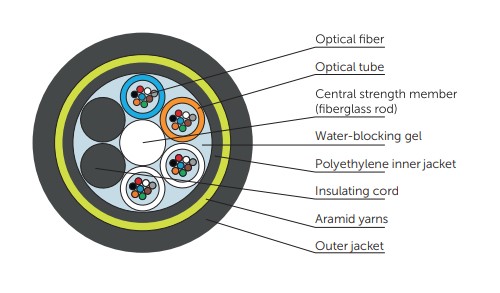
2) OPGW – Optical Ground Wire. OPGW is a key element of modern high-voltage lines. OPGW has two functions: it prevents lightning strikes to overhead power lines and also acts as a communication channel. It does not create additional load on towers and eliminates extra costs for installation and maintenance. According to statistical data, the use of OPGW is the most reliable solution as it is suspended on the highest point of the electrical towers has a service life twice as of ADSS cable. In 2018, prices for aramid used to produce ADSS cable rose dramatically, as a result the use of OPGW for high-voltage lines became even more cost-effective and popular.
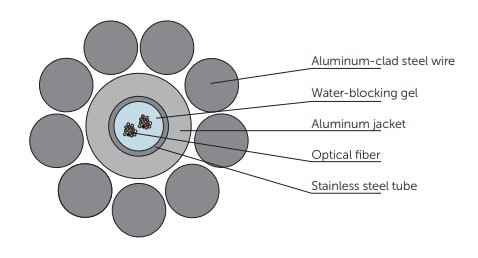
3) Optical phase conductor. Phase conductors are also key elements of high-voltage power lines. Optical phase conductors are used as a redundant communication channel on the lines where OPGW or ADSS cables are already used, as well as on long cable spans where it is impossible to use ADSS or OPGW. The main limitations for the use of optical phase conductors are absence of regulatory documents and lack of design, installation and operation experience. However, some countries, for example China, widely use optical phase conductors.
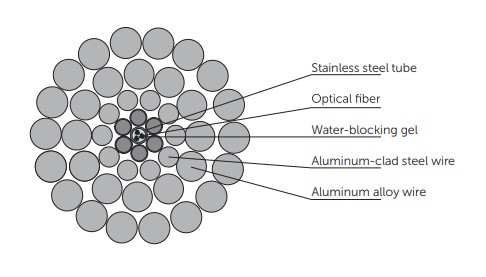
Here are some applications which are using optical cables as distributed sensors for high-voltage lines.
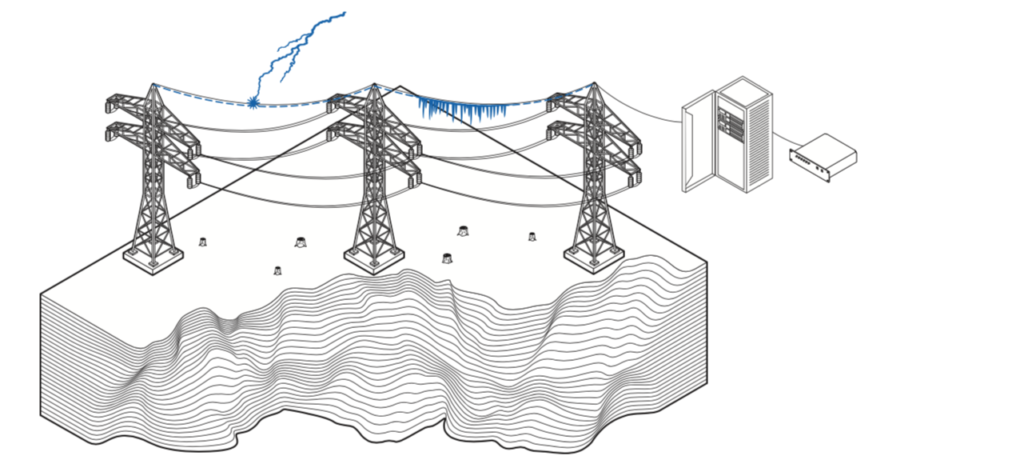
It is possible to develop two types of monitoring systems:
— Warning (W). The system warns about a potential emergency and allows for taking timely measures for its prevention
— Troubleshooting (T). The system identifies the emergency location, reducing time and material expenditures to detect failures.
Various options of monitoring systems for high-voltage lines are shown in table:
| No. | Monitoring | System | Type of cable | Type of system | |||
| DTS | DAS | DSS | OPGW | Optical phase conductor | |||
| 1 | Temperature control during ice melting on ground wire | + | + | + | + | – | W |
| 2 | Control of phase conductor temperature | + | + | + | – | + | W |
| 3 | Control of condition of high-voltage line insulators | – | + | – | + | + | T |
| 4 | Detection of lightning stroke points | – | + | – | + | – | T |
| 5 | Detection of short-circuit points in the high-voltage line | – | + | – | + | + | T |
| 6 | Detection of activity near the high-voltage line | – | + | – | + | + | W |
| 7 | Control of icing occurrence | – | – | + | + | + | W |
Temperature control during ice melting on ground wire
The main goal of this monitoring is to prevent overheating of the optical fiber cables. The countries with harsh weather conditions, power lines are heated with DC current to de-ice the cables, while heating the cables temperature is monitored using DTS and DC heating is switch off when the purpose achieved. The countries like Russia and China are currently deploying such technology coupled with DTS monitoring.
Control of phase conductor temperature
This type of monitoring is essential for high-voltage lines, where it is necessary to increase transmitted power and current load for power distribution. At the specified climatic conditions, it is possible to use all the high-voltage line resources effectively without accidents and complying with the required wire dimensions before crossings (high-voltage lines, railways, motor roads). Systems to control temperature and current load of power cables are widely used. For this purpose, a steel optical module with a fiber used for monitoring is placed into the power cable armor. This system can also be used for overhead high-voltage lines and phase conductors in which a stainless steel tube replaces one of the wires (Figure 3). The mechanical and electrical characteristics of optical phase conductors are consistent with those of phase conductors without optical fiber.
Condition monitoring of high-voltage line insulators
The condition of insulators of high-voltage lines can be monitor and control by using an optical fiber placed into the ground wire or the phase conductor. In such application, the DAS system is used, as the fiber “hears” the typical cracking of faulty insulators as the fiber/cable act as a distributed virtual microphone. The possibility of development of such systems has been examined in lab and needs experimental validation. In this regard, the idea of conducting research, development and engineering works in this field is being studied now.
Detection of lightning and short-circuit strike points
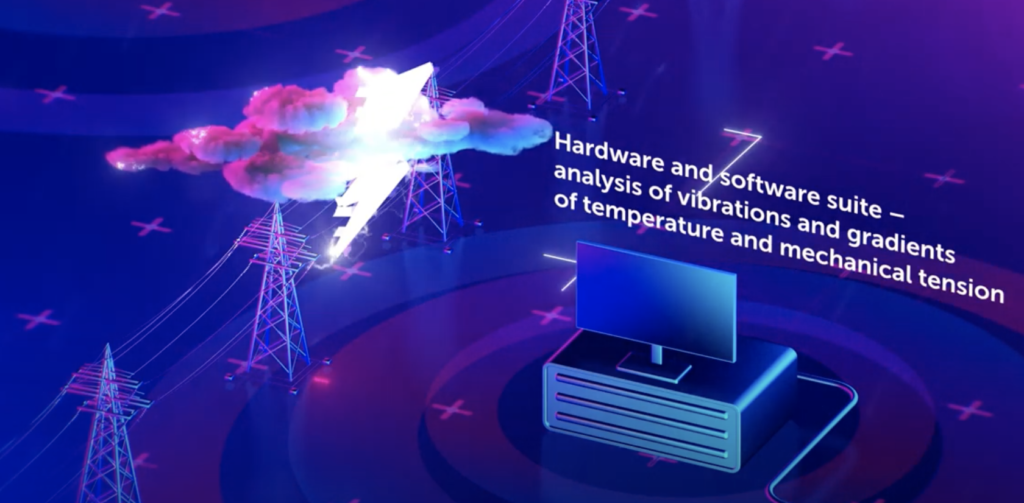
This application is especially important for network management sub-divisions. Each emergency event requires a visual inspection to identify the potential failure. The available diagnostic tools do not allow correct identification of the event location in the high-voltage line with precision, thus, the emergency response teams spend many hours to inspect the high-voltage lines. The lines are often hard to access and prompt identification of lightning strike or short-circuit points in the ground wire is not possible.
DAS systems using OPGW allow for reliable identification of the lightning strike or short-circuit point with an accuracy and precision to several meters. This helps to considerably reduce operating hours of emergency response teams and rapidly restore serviceability of power transmission lines. We are working on an experimental project to conduct verification of this concept, which will allow for calibrating the systems and making them work with maximum efficiency.
Detection of unusual activity near the high-voltage line
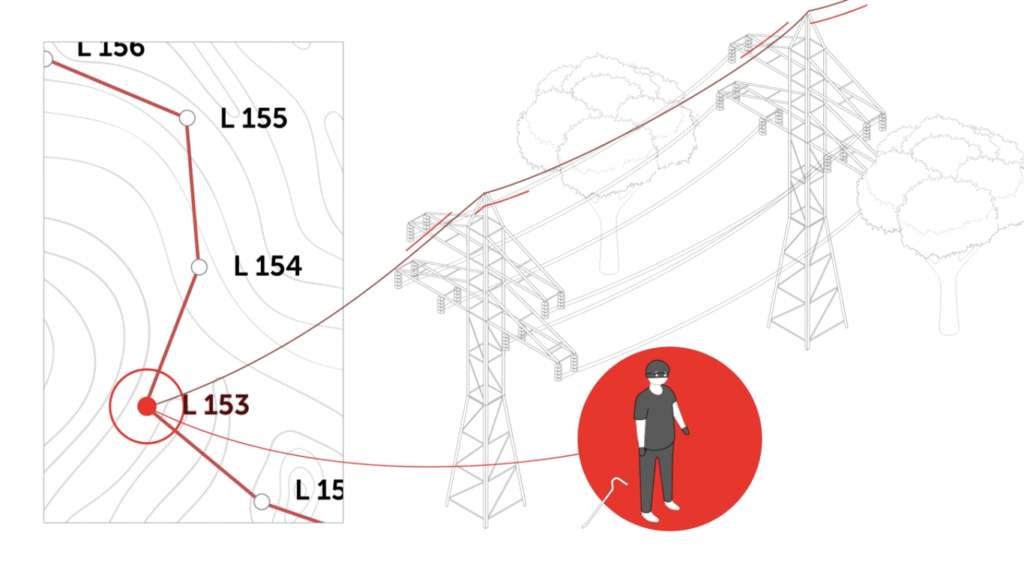
The monitoring of unusual activity near the high-voltage lines is important to prevent unauthorized works in the protected zones. The DAS can use both OPGW and optical phase conductors to “hear” approaching vehicles, impacts on towers, discharges of rifles and other events. This allows a prompt response from the emergency team to prevent accidents in high-voltage lines. A such test system is deployed and in trail phase.
Control of icing occurrence
Distributed strain monitoring in the fiber can be used to control occurrence of icing on power lines. For this purpose, one of the fibers in OPGW or optical phase conductor is pre-strained, and the communication fibers are placed into steel tubes with excess fiber length. This prevents elongation of the fiber upon creation of ice load on the ground wire or the phase conductor. The pre-strained fiber immediately starts elongating when the load changes and can be promptly recorded by the DSS. A small elongation of OPGW or optical phase conductor is recorded in case of icing, and the corresponding preventive measures are taken (for example, DC heating of the cables). A experiential trial project has been initiated and one such cable is installed. The OPGW with pre-strained fiber was suspended between two towers and connected up DSS system.
The introduction of fiber-optic to the high-voltage lines has not only allow to have communication but it can also be used for telemetry. The power lines equipped with fiber optics are used for remote monitoring and management of various parts of power industry. There is strong desire to make these digital power transmission lines to be smarter, which will enable control and monitoring of the systems throughout the lines. Though these systems are quite expensive now, their wide use and consequently reduction of their cost is inevitable. It is advantages for power companies to install the new power line with embedded optical fiber such as OPGW to make their system a future proof.
It is getting imperative to upgrade or install new power line with embedded optical fibers especially for the most critical areas during construction of new lines and upgrading of the existing ones. Companies may not purchase monitoring systems right away, but by installing the fiber based cables they will be able to use the systems in the future without further capital spending. Construction of high-voltage line with embedded optical fiber is economically feasible as it allows to perform different task on same cable such as, data and power transmission and monitoring.